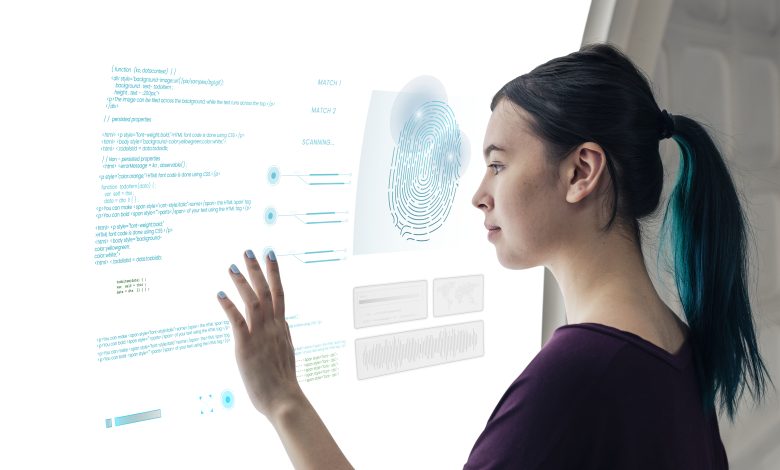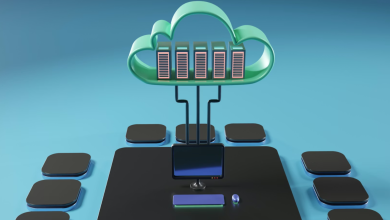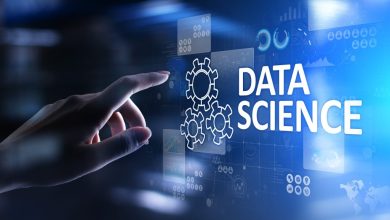
The convergence of artificial intelligence and cloud computing is fundamentally reshaping how organizations understand, develop, and retain their workforce. While traditional HR systems focus primarily on administrative efficiency, modern intelligent People and Culture platforms deliver predictive insights that drive measurable business outcomes. This transformation represents more than technological upgrade; it signals a shift from reactive compliance to proactive strategic enablement.
As organizations navigate an increasingly complex talent landscape, the ability to make data-driven decisions about human capital has become a competitive differentiator. The integration of AI and cloud technologies creates new possibilities for personalizing employee experiences, predicting workforce trends, and optimizing talent strategies at a scale.
The Measurable Impact of Legacy System Limitations
Traditional human resources information systems were architected for transactional processing rather than strategic decision-making. These platforms excel at payroll accuracy, benefits administration, and regulatory compliance but struggle to provide real-time, personalized insights that modern workforce management demands.
Studies show that 47% of HR leaders say their current technologies are difficult to use and fail to meet employee expectations, creating friction that undermines adoption and effectiveness. When internal systems lag external digital standards, engagement suffers measurably.
Organizations implementing AI for compliance monitoring achieve 50% reduction in compliance-related errors, significantly reducing financial penalty risks. Legacy HR infrastructure typically creates longer time-to-insight cycles and missed opportunities for proactive workforce interventions.
Delivering Quantifiable Value Through Predictive Intelligence
The transformative potential of AI in People and Culture management lies in its ability to identify patterns, predict outcomes, and recommend actions before problems manifest. Rather than retrospective reporting, intelligent systems provide forward-looking guidance that enables proactive decision-making at all organizational levels.
AI-powered hiring tools can reduce recruitment costs by up to 30% while reducing time-to-hire by an average of 50%. AI-driven interview analytics increase hiring accuracy by 40%, with predictive analytics enhancing talent matching by 67%. These improvements translate directly to bottom-line impact through reduced hiring costs and improved quality-of-hire outcomes.
Performance management becomes more sophisticated when augmented with continuous feedback analysis and development trajectory modeling. Companies like IBM achieved a 30% decrease in attrition rates by using predictive modeling to analyze employee behavior and implement targeted interventions. AI-driven predictive analytics has helped companies reduce turnover rates by 18-25% identifying employees at risk of leaving and suggesting proactive interventions.
Learning and development initiatives gain precision through skills gap analysis and competency progression tracking. Organizations implementing AI for compensation analysis see a reduction of up to 15-20% in compensation-related expenses, while workforce planning accuracy improves by 20% through predictive capabilities.
Recognition and rewards programs are experiencing significant transformation through AI-powered personalization and automation. SHRM research demonstrates that organizations with strong recognition cultures experience up to 31% lower voluntary turnover, while 90% of HR professionals report that effective recognition programs improve business results. AI enables these programs to become more strategic by personalizing recognition messages, identifying overlooked contributors, and connecting rewards to organizational values, creating deeper emotional connections between employees and their work.
Cloud Infrastructure Enabling Scalable AI Value
Artificial intelligence capabilities require robust, scalable infrastructure that traditional on-premises systems cannot efficiently provide. Making AI intrinsic to organizations delivers cumulative incremental value at scale: 20% to 30% gains in productivity, speed to market and revenue.
Cloud computing platforms offer the computational elasticity necessary for model training, real-time inference, and large-scale data processing that modern AI applications demand. The modular architecture enables organizations to integrate specialized AI services without wholesale platform replacement, reducing implementation risk while accelerating time-to-value.
As of 2024, over 65% of organizations are using People and Culture analytics solutions to enhance employee engagement, productivity, and decision-making. Cloud infrastructure automatically adjusts computational resources based on demand, while built-in governance frameworks support evolving regulatory requirements across multiple jurisdictions.
Responsible Implementation Driving Sustainable Value
The application of artificial intelligence in human resources decisions carries significant ethical and legal implications that directly impact long-term value realization. According to McKinsey, more than half of U.S. workers cite cybersecurity, inaccuracy, or personal privacy as top concerns about generative AI, while a third worries about explainability, equity, and fairness.
AI bias detection tools will reduce unfair practices by 40% by the end of 2025, making systematic approaches to fairness essential for sustainable implementation. Successful implementations incorporate fairness audits throughout the model development lifecycle, not as retrospective validation. This includes diverse training data sets, bias detection algorithms, and regular model performance reviews across demographic groups.
A recent survey shows that 45% of HR professionals cite data security concerns when implementing AI, making transparency and human oversight critical for building organizational confidence. Best practices include human-in-the-loop review processes for high-impact decisions, escalation procedures for edge cases, and regular recalibration of automated recommendations based on outcomes data.
Organizations must establish clear documentation practices that support explainability requirements and regulatory compliance, ensuring employees understand how algorithms contribute to decisions affecting their professional lives.
Strategic Implementation for Maximum ROI
GenAI adoption in HR is rapidly increasing, with the share of HR leaders actively planning or deploying GenAI jumping from 19% in June 2023 to 61% by January 2025. Organizations beginning their AI journey should prioritize use cases with clear return-on-investment metrics and manageable complexity.
Technology architecture assessment represents a critical first step. 47% of organizations struggle to integrate AI with existing systems, while 33% lack AI knowledge and expertise. Existing systems must support real-time data integration, API connectivity, and the computational requirements of AI model inference before implementation becomes feasible.
Companies ahead in AI adoption are 2.5 times more likely to involve HR in helping employees identify tasks suited for automation, accelerating adoption and reducing resistance. Change management considerations extend beyond technology deployment to encompass manager training, employee communication, and cultural adaptation.
Integration with Organizational Strategy and Business Outcomes
AI-powered People and Culture management delivers maximum value when aligned with broader business objectives rather than implemented as isolated technology projects. Since 2022, revenue growth in industries best positioned to adopt AI has nearly quadrupled, with wages rising twice as quickly in AI-exposed industries.
Workforce planning becomes more sophisticated when predictive models incorporate business growth projections, market dynamics, and skills of evolutionary trends. By 2025, 80% of organizations will integrate AI into HR functions, with 70% of organizations expected to use AI-driven tools for recruitment, employee engagement, and performance management.
Performance management systems enhanced with AI support differentiated talent strategies, identifying high-potential employees, and customizing development approaches based on individual characteristics and organizational needs. Companies that use AI for retention strategies have seen a 15% decrease in turnover within the first year of adoption.
Cultural transformation initiatives benefit from AI-powered insights into engagement patterns, collaboration networks, and change readiness indicators. 58% of organizations believe AI will improve employee productivity in the next five years, while 55% believe AI will enhance employee experience.
Measuring Success Through Comprehensive Value Frameworks
Effective AI implementation requires comprehensive measurement frameworks that capture immediate operational improvements and longer-term strategic impact. Based on studies of real-world generative AI applications, organizations achieve labor cost savings of roughly 25% on average from adopting current AI tools, projected to grow from 25 to 40% over the next decades.
Key performance indicators should span efficiency metrics such as time-to-hire reduction and case resolution speed, quality measures including prediction accuracy and user satisfaction scores, and strategic outcomes like retention improvement and skills gap reduction. 71 % of respondents say their organizations regularly use gen AI in at least one business function, up from 65 % in early 2024.
Continuous improvement processes become essential as AI models learn from new data and organizational contexts evolve. Advanced predictive models can achieve accuracy rates exceeding 90% in predicting employee turnover, demonstrating the precision possible with proper implementation and ongoing optimization.
Organizations should plan for iterative enhancement rather than one-time deployment, as AI capabilities improve through usage, feedback, and refinement cycles that maintain accuracy and relevance over time.
Future-Proofing People & Culture Intelligence Capabilities
Nearly four out of five organizations are engaging with AI in some form, which is a historic high, with just 13% having no AI adoption plans. The trajectory of AI development suggests increasingly sophisticated capabilities in natural language processing, predictive modeling, and automated decision-making.
In a May 2025 Gartner webinar, 44% of HR leaders said their function plans to use semiautonomous AI agent capabilities in the next 12 months, indicating the evolution toward more sophisticated automated systems. Organizations establishing AI foundations today position themselves to leverage emerging capabilities as they become available.
Federated learning approaches will enable organizations to benefit from broader industry insights while maintaining data privacy and competitive advantage. AI agents could easily double knowledge workforce capacity in roles like sales and field support, transforming speed to market and customer interactions.
Conversational AI interfaces will democratize People & Culture intelligence across organizational hierarchies, making data-driven decision-making accessible to managers and employees who lack technical expertise. Integration with emerging technologies will create comprehensive People & Culture intelligence ecosystems supporting the full employee lifecycle.
Strategic Imperatives for Sustainable Transformation
AI-driven HR tools will save organizations $1.5 trillion (about $4,600 per person in the US) globally by 2025, with 90% of HR functions expected to be augmented by AI. This transformation represents both a significant opportunity and substantial responsibility for organizational leaders.
Success requires strategic thinking that balances innovation with ethical implementation and sustained organizational change management. Organizations with strong AI Centers of Excellence and active HR involvement are more likely to scale innovation, strengthen culture, and deliver measurable business outcomes.
While 67% of respondents disagree that their organization has been proactive in training employees to work alongside AI technologies, leading organizations recognize that AI amplifies human potential rather than replacing human judgment. The competitive advantage goes to organizations that view AI as a strategic enabler of human capital optimization.
By focusing on value creation, ethical implementation, and continuous improvement, organizations build People & Culture intelligence capabilities that drive sustained business success. Workers in AI-powered roles earn wage premiums of up to 43% compared to those without AI skills, even in highly automated jobs, demonstrating that strategic AI adoption creates value for both organizations and individuals.
The organizations that thrive will be those that treat AI transformation as an ongoing capability rather than a one-time project, establishing foundations for continuous adaptation and value realization in an increasingly AI-driven business environment.
Conclusion: The Strategic Imperative for AI-Driven People & Culture Intelligence
The convergence of artificial intelligence and cloud computing in human capital management represents more than a technological evolution; it marks a fundamental shift in how organizations create sustainable competitive advantage through their workforce. The data demonstrates compelling value propositions: organizations implementing AI-driven HR strategies achieve measurable improvements in retention, productivity, and operational efficiency that directly impact business performance.
However, success requires more than technology deployment. Organizations must address the human dimensions of AI transformation through comprehensive change management, ethical implementation frameworks, and continuous capability development.
The path forward demands strategic thinking that balances innovation velocity with responsible implementation. Leaders must invest in cloud infrastructure that supports AI scalability, establish governance frameworks that ensure fairness and transparency, and develop measurement systems that capture both immediate efficiency gains and long-term strategic value creation.
As people & culture intelligence becomes increasingly sophisticated through predictive analytics, conversational interfaces, and autonomous agents, the organizations that thrive will be those that view AI as an amplifier of human potential rather than a replacement for human judgment. The future belongs to companies that successfully integrate artificial intelligence with human insight, creating workforce ecosystems that are more adaptive, more intelligent, and more human-centered than ever before.




